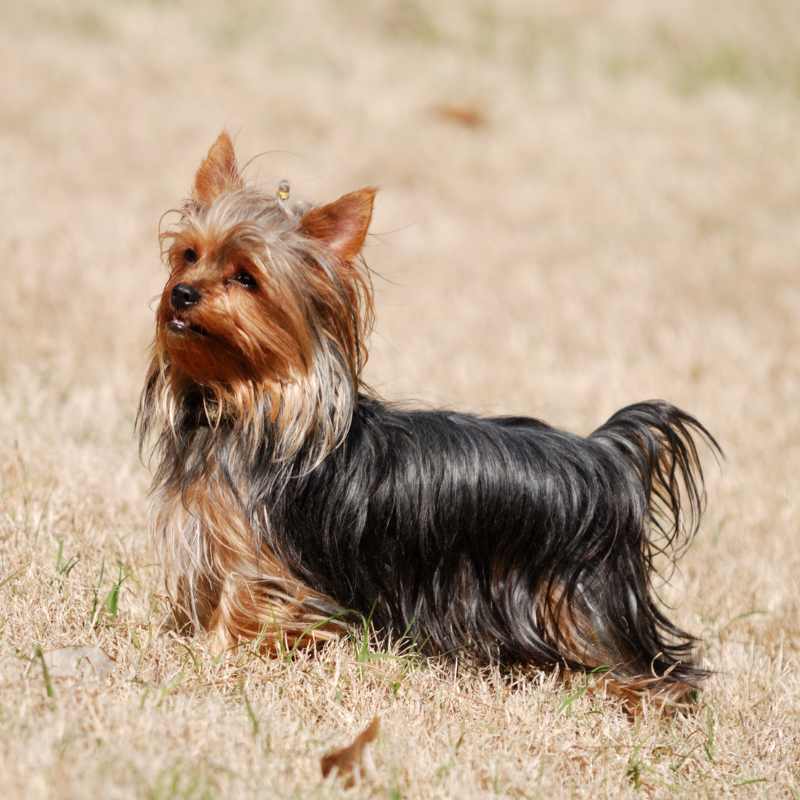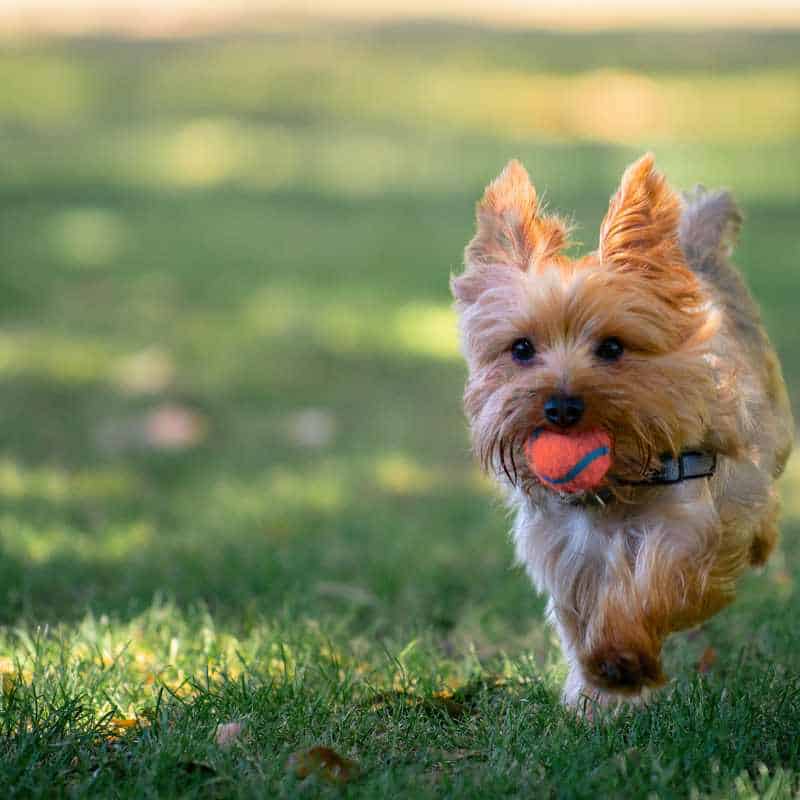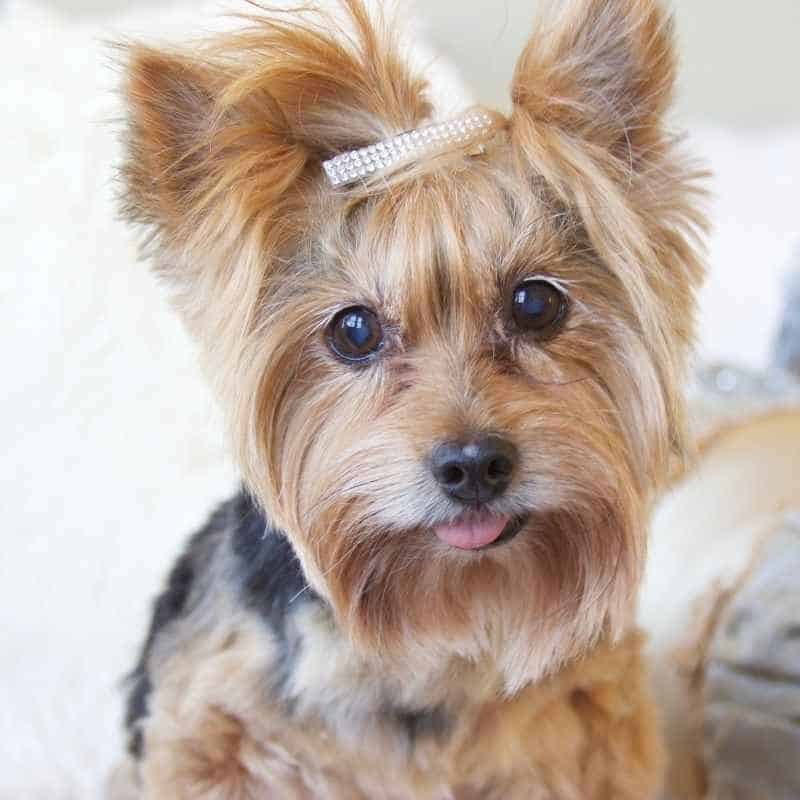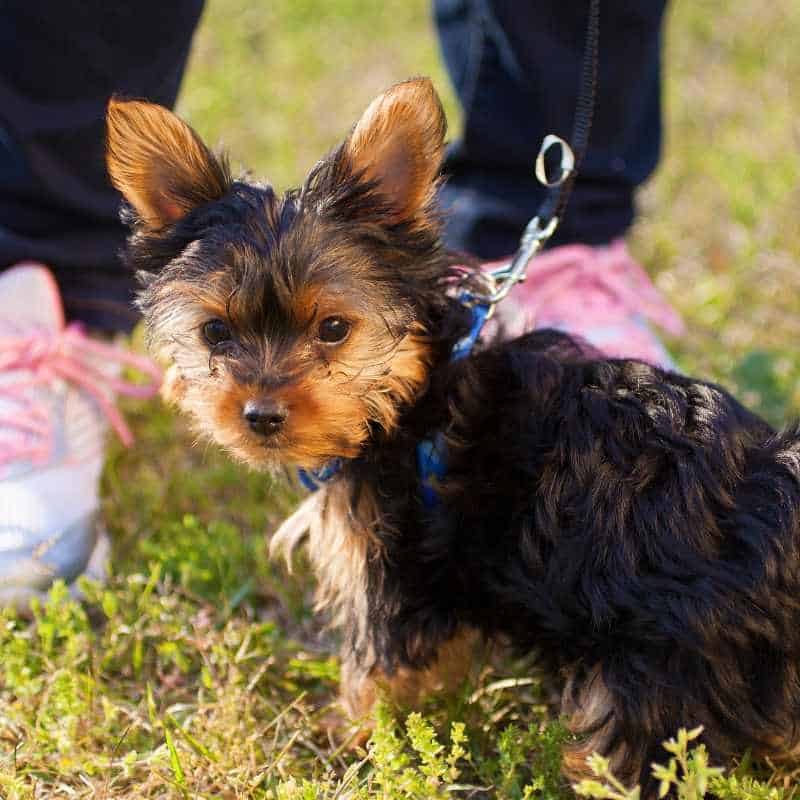Blog
Luxating Patella in Yorkies: 4 Common Reasons and Treatment

If your little Yorkie is limping or favoring one leg you might be dealing with Luxating Patella in Yorkies. This is a pretty common issue in smaller breeds and understanding the causes, symptoms and treatments will help keep your fur baby happy and healthy.
What is Luxating Patella in Yorkies?
Luxating Patella is a condition where the kneecap (patella) dislocates or moves out of its normal position. This causes discomfort, pain and an abnormal gait, it looks like your Yorkie is limping on 3 legs. The patella should glide smoothly along the groove at the end of the femur (thigh bone) but in the case of luxation it slips out and the knee joint doesn’t function properly.
Causes of Luxating Patella in Yorkies
- Genetics: This is the main reason. Many Yorkies inherit it from their parents.
- Trauma: Injuries to the knee can cause the patella to dislocate.
- Structural Abnormalities: Abnormal development of the knee joint or surrounding muscles and tendons can cause luxation.
- Obesity: Excess weight can put extra stress on the knees and make it worse.

Symptoms of Luxating Patella in Yorkies
It’s important to recognize the symptoms of a Yorkie luxating patella early. Common signs are:
- Yorkie limping or skipping while walking
- Sudden lameness or refusing to put weight on a leg
- Difficulty jumping or climbing stairs
- Abnormal gait or “bunny hopping”
- Audible clicking sound when the knee moves
If you see these symptoms you need to consult your vet for a proper diagnosis.
How is Luxating Patella Diagnosed in Yorkies
Diagnosis is done through physical examination where the vet will manipulate the knee to feel for dislocation. In some cases X-rays may be needed to assess the severity and plan the treatment.
Treatment Options for Luxating Patella in Yorkies
The treatment for luxating patella in Yorkies varies depending on the severity of the condition, graded from 1 to 4:
Conservative Treatment (Grades 1 and 2)
For mild cases conservative management might work. Here’s a breakdown of what that means:
Weight Management
Keeping your Yorkie at a healthy weight is key to reducing stress on their joints. Excess weight can make the symptoms of yorkie luxating patella worse by putting extra stress on the knee. A balanced diet tailored to your Yorkie’s needs and regular vet check ups can help keep them at a healthy weight. Your vet may also recommend a joint health diet.
Exercise for Yorkies with luxating patella
Limited exercise is good for the muscles around the knee to provide better support for the patella. Short, gentle walks on a leash or playing on soft surfaces can help tone the muscles without overloading the joints. Avoid high-impact activities like jumping or running on hard surfaces as these can make it worse.
Physical Therapy
Physical therapy including hydrotherapy can help improve muscle tone without putting too much strain on the knees. Hydrotherapy involves exercises in water which provides resistance and support for the body making it a low-impact option. Other physical therapy options may include massage, range of motion exercises, and specific strength-building exercises guided by a professional.
Medications
Anti-inflammatory drugs and pain relief medications can help with symptoms of patella luxation in Yorkies. Non-steroidal anti-inflammatory drugs (NSAIDs) are commonly prescribed to reduce inflammation and pain. In some cases joint supplements with glucosamine and chondroitin may also be recommended to support joint health and repair.

Surgical Treatment (Grades 3 and 4)
For more severe cases of luxating patella in Yorkies surgery may be necessary to correct the dislocation and provide long term relief. There are several surgical options available each targeting different parts of the knee to keep the patella in place. Here are the main surgical treatments:
Tibial Tuberosity Transposition
This surgical procedure involves adjusting the alignment of the patella by repositioning the tibial tuberosity, the bony prominence on the tibia (shinbone) where the patellar ligament attaches. By moving this attachment point the surgeon can realign the patella so it tracks properly in its groove. This will prevent future dislocations and restore normal knee function.
Trochleoplasty
Trochleoplasty is a procedure that deepens the trochlear groove, the groove at the end of the femur where the patella sits. If this groove is too shallow the patella can easily slip out of place. By deepening the groove the surgeon ensures the patella stays in its correct position and reduces the likelihood of luxation. This surgery is particularly effective for dogs with severe or recurrent patella dislocation.
Lateral Imbrication
Lateral imbrication involves tightening the joint capsule and surrounding tissues to keep the patella in place. This procedure is often done in conjunction with other surgeries to provide extra support to the knee. By tightening the lateral (outer) structures the surgeon can help stabilize the patella so it tracks correctly in the trochlear groove.
Post Surgery Care of Luxating Patella in Yorkies
Post-surgery care is key to your Yorkie’s recovery. Proper care and rehab can make a huge difference in the outcome of the surgery and your pet’s long-term health. Here are the main components of post-surgery care:
Rest and Restricted Activity
After surgery you need to limit your Yorkie’s movement to allow proper healing. This means keeping your Yorkie in a confined space like a crate or a small room to prevent jumping or running. Here’s how to manage rest and restricted activity:
- Crate Rest: Using a crate can help restrict your Yorkie’s movement and provide a safe space to recover. Make sure the crate is big enough for your Yorkie to stand up, turn around, and lie down comfortably.
- Short Leash Walks: When taking your Yorkie out for bathroom breaks use a short leash to control their movement and prevent sudden jerky movements.
- No Stairs: Block access to stairs to prevent your Yorkie from climbing or descending which can strain the healing knee.
- No Jumping: Don’t let your Yorkie jump on or off furniture. Use ramps or pet stairs to make it easier for them to get to their favorite spots without jumping.

Rehab Exercises
Gradual introduction of rehab exercises can help your Yorkie regain strength and mobility in the affected leg. These exercises should be done under the guidance of a vet or a professional animal physical therapist to ensure they are done correctly and safely. Here are some common rehab exercises:
- Passive Range of Motion (PROM) Exercises: These involve gently moving the affected leg through its normal range of motion to keep the joint flexible and reduce stiffness. Your vet or physical therapist will show you how to do these exercises safely.
- Strengthening Exercises: As your Yorkie progresses you can introduce strengthening exercises to build up the muscle around the knee. These might include controlled walks, sit to stand exercises and gentle incline walking.
- Hydrotherapy: Water based exercises such as swimming or walking on an underwater treadmill provide resistance and support so your Yorkie can move without putting too much stress on the knee.
Follow-Up Visits
Regular check-ups with the vet are necessary to monitor your Yorkie’s progress and adjust the treatment plan as needed. During these visits, the vet will:
- Assess Healing: The vet will check the surgical site for signs of proper healing and look for any potential complications, such as infection or inflammation.
- Evaluate Mobility: The vet will assess your Yorkie’s gait and range of motion to ensure that the knee is functioning correctly.
- Adjust Treatment: Based on your Yorkie’s progress, the vet may recommend changes to the rehabilitation plan, such as introducing new exercises or adjusting the intensity of current ones.
- Provide Guidance: Your vet will offer advice on managing your Yorkie’s recovery at home and answer any questions you might have about their care.
Preventing Luxating Patella in Yorkies
While genetic factors cannot be entirely prevented, there are steps you can take to minimize the risk and manage the condition:
- Regular Vet Check-Ups: Early detection can prevent the condition from worsening.
- Healthy Diet: Proper nutrition supports overall health and weight management.
- Controlled Exercise: Regular, low-impact exercise strengthens the muscles supporting the knees.
- Avoiding Trauma: Be cautious with your Yorkie’s activities to prevent injuries.
Living with a Yorkie with Luxating Patella
Having a Yorkie with luxating patella doesn’t mean a life of constant pain and discomfort for your pet. With proper care, treatment, and management, many Yorkies lead happy, active lives. It’s essential to stay vigilant, recognize the symptoms early, and work closely with your vet to ensure the best care for your furry friend.

Common Myths About Luxating Patella in Yorkies
There are several misconceptions about yorkie luxating patella. Let’s debunk a few:
- “Surgery is always necessary.”
- Not true. Many cases, especially mild ones, can be managed conservatively.
- “It’s only a problem for older dogs.”
- Luxating patella can affect Yorkies at any age, even puppies.
- “It’s caused by poor breeding.”
- While genetics play a role, even well-bred Yorkies can develop the condition.
READ ALSO: What Is a Frorkie Dog Breed? Meet the Hybrid Yorkie Breed
Luxating Patella in Yorkies: Conclusion
Luxating patella in Yorkies is a manageable condition with the right approach. Understanding the reasons behind it, recognizing the symptoms, and knowing the treatment options can help you take proactive steps to ensure your Yorkie leads a happy, pain-free life. Remember, your vet is your best ally in managing this condition, so regular check-ups and following professional advice are key.
By staying informed and attentive, you can provide the best care for your beloved Yorkie, helping them bounce back from a yorkie limping on 3 legs to running joyfully on all four.
READ ALSO: Why Does My Yorkie Want to Eat Grass?
